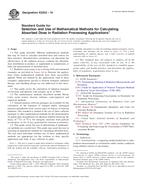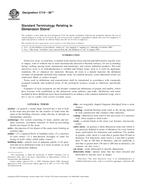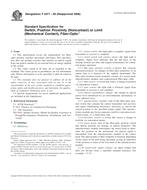1.1 This test method describes destructive quality control tests used to determine the integrity of thermo-fusion seams made with reinforced geomembranes. A test procedure is described that uses seam tests using grab specimens for seam shear strength.
1.2 The types of thermal field and factory seaming techniques used to construct geomembrane seams include the following.
1.2.1 Hot Air – This technique introduces high-temperature air between two geomembrane surfaces to facilitate melting. Pressure is applied to the top or bottom geomembrane, forcing together the two surfaces to form a continuous bond.
1.2.2 Hot Wedge – This technique melts the two geomembrane surfaces to be seamed by running a hot metal wedge between them. Pressure is applied to the top and bottom geomembrane to form a continuous bond. Some seams of this kind are made with dual tracks separated by a non-bonded gap. These seams are sometimes referred to as dual hot wedge seams or double-track seams.
1.2.3 Extrusion – This technique encompasses extruding molten resin between two geomembranes or at the edge of two overlapped geomembranes to effect a continuous bond.
1.2.4 Radio Frequency (RF) or Dielectric – High frequency dielectric equipment is used to generate heat and pressure to form an overlap seam in factory fabrication.
1.2.5 Impulse – Clamping bars heated by wires or a ribbon melts the sheets clamped between them. A cooling period while still clamped allows the polymer to solidify before being released.
1.3 The types of materials covered by this test method include, but are not limited to, reinforced geomembranes made from the following polymers.
1.3.1 Very Low Density Polyethylene (VLDPE).
1.3.2 Linear Low Density Polyethylene (LLDPE).
1.3.3 Flexible Polypropylene (fPP).
1.3.4 Polyvinyl Chloride (PVC).
1.3.5 Chlorosulfonated polyethylene (CSPE).
1.3.6 Ethylene Interpolymer Alloy (EIA).
1.4 Units – The values stated in either SI units or inch-pound units are to be regarded separately as standard. The values stated in each system may not be exact equivalents; therefore, each system shall be used independently of the other. Combining values from the two systems may result in non-conformance with the standard.
1.5 This standard does not purport to address all of the safety concerns, if any, associated with its use. It is the responsibility of the user of this standard to establish appropriate safety and health practices and determine the applicability of regulatory limitations prior to use.
Product Details
- Published:
- 10/01/2011
- Number of Pages:
- 6
- File Size:
- 1 file , 280 KB


